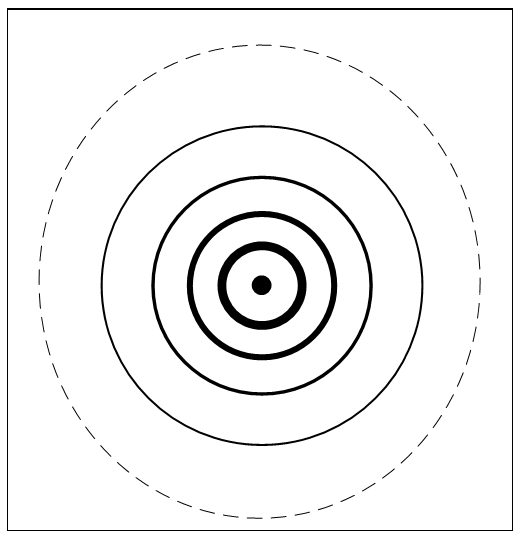In physics, light is an electromagnetic wave whose many wave lengths give a spectrum (3.3.1). In this model, light is a quantum wave that does the same except it is a processing wave, hence quantum theory says it can collapse and restart. Quantum waves then spread at the speed of light because each network point passes its processing on to all its neighbors every cycle. The result is a wave that spreads but why then does this wave travel forward, rather than spreading equally in all directions?
Huygen’s Principle, that light is a wave that moves forward because each point is a new wave source, then describes how processing spreads on a network. Each point spreads the wave in all directions, but the front starts after the back, so they are out of phase. As a result, the spread behind the wave front mostly cancels out, but the spread forward doesn’t, so the wave moves forward. Light thus moves forward because the wave front starts after its rear, so what is behind the wave front cancels out. Newton’s particle theory was simpler but Huygen’s theory is better because light does act like a wave. Light as a processing wave spreading on a network then supports Huygens waves rather than Newton’s particles.

That a photon is a process distributed over the points of its wave length explains its frequency, but what happens as it spreads? Gauss noted that a pebble dropped in a pool creates ripples that decrease strength because the initial activity is divided more. In his words, the flux per ripple is constant but for friction. In Figure 3.12, each ripple spreads the same energy over a larger circle so it becomes weaker.
Applying this principle to light, it weakens as it spreads but doesn’t change its frequency. Water waves lose energy as they spread by friction, and so fade away, but quantum waves spread without friction until they restart anew in a physical event. It follows that distributing a quantum wave reduces its frequency, but doesn’t weaken it, while spreading on a network weakens it, but doesn’t alter its frequency.
However unlike a ripple, quantum waves spread in three dimensions, in an expanding sphere, so they weaken as an inverse square of distance. Chapter 5 deduces the inverse square laws of electricity, magnetism, and gravity from Gauss’s principle, but how exactly can processing spread on a network?